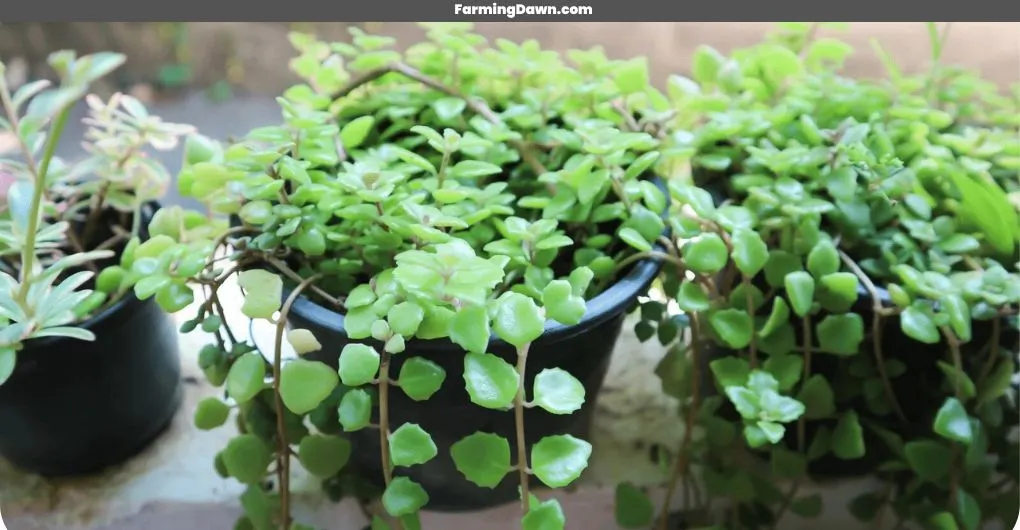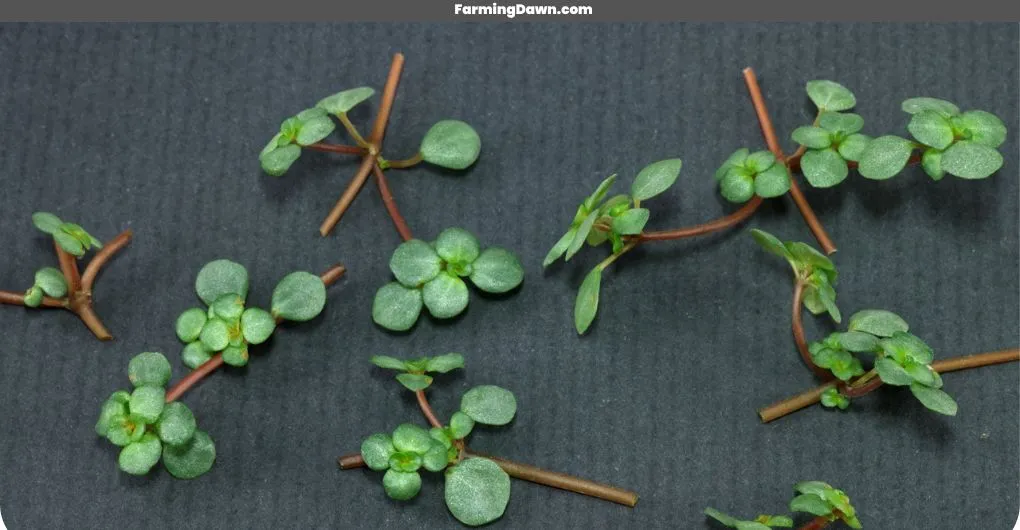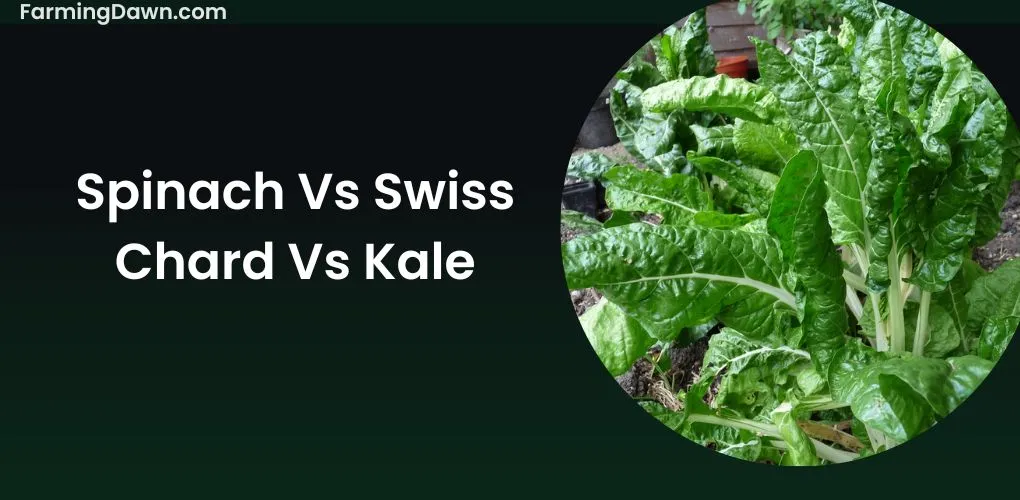Today I’m super excited to introduce you all to the pilea depressa plant. This incredible species has a lot of exciting features that make it an ideal choice for both novice gardeners as well as experienced growers alike. With its unique shape, easy care requirements, and diverse growth potential this plant is sure to be a hit in any home or garden.
In this article, I’ll give you an overview of the Pilea depressa plant, tell you how to best care for it, provide tips on planting and propagation techniques, and finally explain why this species can be such an asset when planning your next gardening project. So let’s get started!
Overview Of The Pilea Depressa Plant
This fun-loving and hardy species is popular amongst houseplant enthusiasts for its unique growth habits and easy-care requirements. It can be found in many places around the world, from tropical climates to temperate zones! Its adaptability makes it ideal for anyone looking to cultivate a diverse array of plants indoors or outdoors.
The perfect companion for busy people who don’t have much spare time on their hands but still want to reap the joys of gardening! With its vibrant green leaves that appear almost velvet soft, this plant will not only bring you pleasure – it will also ensure your home looks great too!
Here take a quick overview of this beautiful plant!
Related: How to care for Homalomena Selby?
| Common Names | Baby toes, Depressed Clearweed, baby tears, angel’s tear, Polyanna vine, Jacob’s tear, Paddy’s wig |
| Scientific Name |
Pilea depressa
|
| Origin | native to the Caribbean, Brazil And Mexico |
| Plant type | herbaceous plant |
| Size | 4-6 inches tall |
| Temperature | 69-80°F (15-26°C) |
| USDA Zone | 9-12 |
| Color | red and white small round flowers |
| Soil Type | peat moss with some perlite added |
How To Care For Pilea Depressa?
Now that you know more about the depressa pilea plant, let’s look at what it takes to make this beautiful houseplant thrive.
See more: Care guide for Philodendron Quercifolium.

Soil Requirements
Growing this plant in the right substrate is essential to ensuring it thrives. When selecting a potting mix for your tiny tears care, opt for an equal mixture of peat-based compost and perlite or vermiculite. This will help to ensure good drainage while still allowing ample moisture retention. For foliera pilea depressa size pots, use a light yet nutrient-rich substrate like coco coir mixed with some sand.
If you’re growing your depressa pilea vivarium care in water, be sure to keep the surface continually covered with fresh clean water, a 1:1 ratio of rainwater and distilled is ideal. And lastly, when giving them their weekly drinks make sure not to overdo it as they don’t need too much water; just enough to moisten the top layer lightly should do!
See more: How to care for Philodendron squamiferum?
Watering Needs
Watering is an important part of keeping your plants healthy and happy. When it comes to watering the plant, make sure you’re not giving it too much or too little. Once a week should do the trick if you’re using soil that is well-draining. If you’re propagating with water, change out the water every few days so your cuttings can remain hydrated without becoming soggy.
Light Requirements
Light requirements are key for the successful growth of any plant! These plants thrive in bright, indirect sunlight. If your plant is placed too far away from a window or other source of natural light, you may notice that the leaves start to yellow and thin out. When caring for this species, be sure to avoid direct sun exposure as it can cause leaf burn.
Fertilizing The Plant
Fertilizing your plant is like giving it a well-deserved spa day! Not only does adding fertilizer to the soil help encourage lush growth and vibrant flowers but also helps give an extra boost when you see signs of stress or if your beloved depressa pilea is starting to look a little leggy.
While it may not be necessary to fertilize every week, having a regular schedule in mind can really make the difference between a thriving houseplant and one that’s on its way out. To get the most bang for your buck, try using an organic fertilizer specifically designed for flowering plants, this will provide all the nutrients needed to keep it looking healthy and happy.
Learn more: Care guide for Hoya Linearis.
And don’t worry about any harm coming from feeding some greens to curious tortoises; as long as you’re providing them with nutrient-rich food, depressa pilea won’t do them any harm. In short, properly fertilizing your Pilea can yield countless benefits including beautiful blooms, increased resilience to pests & diseases, and overall improved health & vigor of the plant itself.
Pests And Diseases
Caring for your depressa plants doesn’t just involve planting and propagation – you also need to be aware of potential pests and diseases. Fortunately, most problems can be managed with a little bit of knowledge or by taking preventive measures.
Depressa pilea is not toxic to cats, but it’s still important to keep them away from the plants as they may chew on the leaves or stems. Also, if you’re growing ‘Tiny Tears’ in a terrarium, make sure there’s adequate ventilation so that fungal infections don’t become an issue.
All varieties are susceptible to mealybugs and aphids, which can usually be taken care of with insecticidal soap spray or neem oil solutions. And finally, ‘Sao Paulo’, like many other pileas, is prone to root rot caused by overwatering – so water only when the soil feels dry about one inch below the surface!
Pruning And Trimming
When it comes to pruning and trimming, the best approach is moderation. You want to keep an eye out for any problems that might occur with this plant as it grows; if you notice anything like browning leaves or lanky stems, some judicious trimming may be necessary.
For example, when I noticed my Pilea plant was getting too large for its pot, I trimmed back the branches and removed a few of the larger leaves in order to encourage new growth while still maintaining a full-grown size Foliera pilea depressa.
Learn more: How to care for Philodendron Burle Marx?
This had the happy result of helping reduce potential issues down the line such as pest infestations or disease. When done correctly, pruning can help promote healthy growth and ensure your plant looks its best!
How To Propagate Pilea Depressa?
When it comes to propagating depressa pilea, there are two main methods, stem-cuttings and seed. I’m going to focus on the former first, so let’s chat about that. Stem-cuttings are a great way to reproduce this plant, as they are incredibly easy to propagate.
On the other hand, propagating via seeds can be a bit more tricky. It’s important to use fresh seeds and to be sure to keep your soil moist throughout the germination period. Plus, you’ll need to wait a bit longer for the results.
That’s the basics of propagating this plants. As I said, it’s easy to do, but you need to remember the basics. So, let’s discuss these methods in detail.
Learn more: How to propagate Hoya sunrise?

Propagation Via Stem-Cuttings
Stem cuttings are the most popular propagation method for this species, and with patience and care, you can ensure success. To do this, carry out the following steps:
- Simply take a 4in stem-cutting from a healthy adult plant, it should have at least two sets of leaves.
- Remove the bottom set of leaves.
- Dip the end in rooting hormone (optional)
- Place it into moist soil or water.
- Keep the cutting lightly misted and in bright indirect light until you notice new growth appearing which indicates roots forming.
Once there’s enough root development happening, pot up your baby tears depressa pilea, peperomia pilea depressa or other varieties gently, making sure not to damage any newly formed roots. With some love and attention, your propagated planta should continue to thrive!
See more: Philodendron Moonlight care and propagation.
Propagation Via Seed
So you’ve got the hang of propagating depressa pilea via stem-cuttings and now want to try something a bit different? Well, propagation via seed is another great way to increase your plant collection! It’s especially useful when looking to grow to creep pilea depressas or miniature peperomia (pilea) varieties.
All that’s needed is some patience and care, checking on your seeds regularly in their warm, moist environment with plenty of light and air circulation. And don’t forget about their habitat needs either, make sure they’re planted in well-draining soil with adequate nutrients, space them out as necessary if growing several together, and use pots sized appropriately for the variety you have chosen.
Uses And Benefits Of Pilea Depressa
Now that we’ve discussed the propagation methods for your plant, let’s dive into some of the benefits and uses it offers. This beautiful indoor plant is great for adding a pop of color to any room! And because it’s non-toxic to cats, you don’t have to worry about Fido or Fluffy getting sick if they get curious and take a nibble.
Depressa pilea ‘Baby Tears’ has an especially delicate leaf texture which makes it perfect for hanging baskets – making it ideal for those with limited space who want something eye-catching without taking up too much real estate in their home.
It also does well as a ground cover when planted outdoors, so even people with large gardens will enjoy its vibrant foliage. All in all, this versatile little plant is sure to bring plenty of joy no matter where you decide to put it!
Interesting Facts About Pilea Depressa
There are some fascinating facts about Pilea plants, commonly known as ‘Miniatur Peperomia’ or Baby Tears that you may not know!
For instance, did you know that this species of pilea can live up to 10 years? That makes it one of the longest-living house plants available on the market today, much longer than many other common varieties like depressa pilea Logee’s or Soleirolia soleirolii.
Not only does Pilea have a long life span but its leaves are also incredibly delicate with beautiful frilly edges, similar to ‘Baby tears’ from which it gets its name. So if you’re looking for a low-maintenance houseplant that will give your home plenty of character without taking over, then this plant might just be the perfect fit for you!
How To Plant Pilea Depressa?
When it comes to planting, Pilea plant is a dream! The plant’s dense foliage makes it perfect for creating an indoor jungle-like atmosphere. With its various varieties, such as Sao Paulo, Baby Tears, Palus, Tiny Tears and more – you can create a unique look with each one of them.
I recently planted some depressa pileas in my home, and the way they fill up any space with their lush greenery is simply stunning! Let’s discuss how the complete methods of planting this beautiful soecies in your garden or home.
Preparing The Soil
When planting, the soil needs to be prepared properly to ensure it’s a healthy environment for your miniature peperomia pilea depressa, Himalaya pilea depressa, pilea depressa ‘baby tears’, or pilea depressa ‘Sao Paulo’ plant.
Make sure to add organic material such as compost or manure into the soil before you start planting and mix in some perlite too. This will help create a well-draining yet moisture-retentive soil that these plants love!
Planting The Seedlings
Once you’ve got the soil ready, it’s time to start planting your plants! Whether you’re getting your seedlings from a sale or growing them underwater in an aquarium – no matter what kind of Pileas you have – they need proper care and attention.
When transplanting, make sure to place each seedling into its own container so that it can take full advantage of all the nutrients available. Be gentle with these tender little plants; avoid over-watering, as too much moisture may cause root rot.
Watering The Plant
Now that you’ve got your pilea planted and settled in, it’s time to make sure they have the right amount of water. It’s important not to over-water as this can cause root rot or even death for some species like pilea depressa chocolate or kiereweed!
But on the other hand, if you don’t give enough water, then your plants might start wilting or dying – especially in a vivarium setting. To help keep your pileas healthy, try using a Pantano technique with sao paulo soil; this will help provide just enough moisture without making them soggy. And thus you’ve successfully planted this beautiful species in your home.
Pilea Depressa: Final Thoughts
It goes without saying that the Pilea Depressa plant is one of nature’s most incredible creations. With its lush foliage and eye-catching blooms, this beauty will bring a touch of class to any garden or home. Not only does it add aesthetic value, but it can also be grown successfully with some basic knowledge of care and maintenance.
By following the tips outlined above for planting, soil requirements, watering needs, and propagation, you’ll have an absolutely stunning Pilea in no time! And if by chance your journey doesn’t go as smoothly as planned–just keep trying until you’re rewarded with success beyond your wildest dreams!





